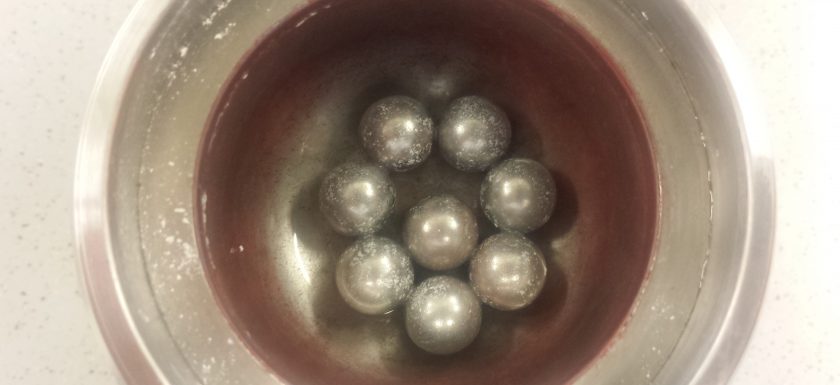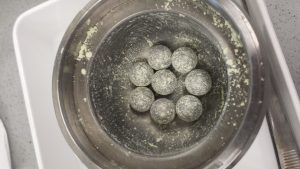
In chemistry, working up a synthesis route or a method which leads to the favored product is a challenging, lengthy procedure. Most of the time it is based on the concept “trial and error” and a lot is discovered by coincidence. For instance, the today’s industrial processes hydroformylation and the Czochralski process have their roots in accidental discoveries and very precise observation.
Before a synthesis method becomes a large industrial process the synthesis must be optimized in a much smaller scale. That happens in the laboratory and is an odyssey that includes varying different parameters.
Chemists refer to their work in the laboratory as “cooking”. As in the kitchen a major part of chemical reactions is performed in solvents. There is even a saying for that: “Corpora non agunt nisi fluida”. Translated it means that solids do not react until they have been dissolved. Nevertheless, solid state reactions are possible. Furthermore, the exclusion of solvents is favorable regarding safety, environmental protection as well as economics.
In that case the mechanochemical way of synthesizing materials by using a mill is benefiting. Another advantage of milling is that it is not required to set up high temperatures that is often needed for solid state reactions. That way, materials, for example perovskites, could be synthesized that are not stable at higher temperatures.

Milling is a complex process. Different factors can affect the outcome. The number, radius and mass of the balls along with the volume ratio of them to the powder filled into the jar are examples of factors related to these balls. Besides that, the velocity, frequency and the duration of milling are changeable, too.
But having many different parameters to vary also means going through a lot of trial and error procedures. That is another reason why science is the greatest teacher when it comes to learning to be patient.

That was really interesting! It is like in the old days, in an alchemist lab. And how do you make the balls do their milling business? By carefully shaking the recipient? Now, I am curious.